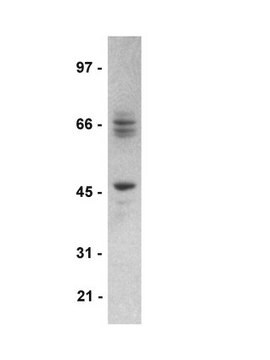1.12179
Glutardialdehyde solution 25%
for electron microscopy, acc. to P.J. Anderson (purified and filled under nitrogen)
Synonym(s):
Glutaraldehyde solution, Glutaric dialdehyde solution, Pentane-1,5-dial
About This Item
Recommended Products
vapor pressure
0.27 hPa ( 20 °C)
Quality Level
form
liquid
IVD
for in vitro diagnostic use
concentration
24.7-25.7% (alkalimetric)
technique(s)
electron microscopy: suitable
color
colorless
pH
>3.0 (20 °C in H2O)
bp
100.5 °C/1013 hPa
mp
-6 °C
density
1.06 g/cm3 at 20 °C
application(s)
diagnostic assay manufacturing
hematology
histology
storage temp.
2-8°C
SMILES string
[H]C(CCCC([H])=O)=O
InChI
1S/C5H8O2/c6-4-2-1-3-5-7/h4-5H,1-3H2
InChI key
SXRSQZLOMIGNAQ-UHFFFAOYSA-N
Looking for similar products? Visit Product Comparison Guide
General description
Analysis Note
Identity: conforms
Free acid (as glutaric acid): ≤ 0.2 %
Methanol (HS-GC): ≤ 0.3 %
Optical purity (E 280 nm / E 235 nm): ≥ 3.0
Signal Word
Danger
Hazard Statements
Precautionary Statements
Hazard Classifications
Acute Tox. 4 Inhalation - Acute Tox. 4 Oral - Aquatic Acute 1 - Aquatic Chronic 2 - Eye Dam. 1 - Resp. Sens. 1 - Skin Corr. 1B - Skin Sens. 1 - STOT SE 3
Target Organs
Respiratory system
Supplementary Hazards
Storage Class Code
8A - Combustible, corrosive hazardous materials
WGK
WGK 3
Flash Point(F)
Not applicable
Flash Point(C)
Not applicable
Certificates of Analysis (COA)
Search for Certificates of Analysis (COA) by entering the products Lot/Batch Number. Lot and Batch Numbers can be found on a product’s label following the words ‘Lot’ or ‘Batch’.
Already Own This Product?
Find documentation for the products that you have recently purchased in the Document Library.
Related Content
Learn about the criticality of biological tissue staining for research and clinical pathology using standard and special stains and dyes.
Learn about the criticality of biological tissue staining for research and clinical pathology using standard and special stains and dyes.
Learn about the criticality of biological tissue staining for research and clinical pathology using standard and special stains and dyes.
Learn about the criticality of biological tissue staining for research and clinical pathology using standard and special stains and dyes.
Our team of scientists has experience in all areas of research including Life Science, Material Science, Chemical Synthesis, Chromatography, Analytical and many others.
Contact Technical Service






